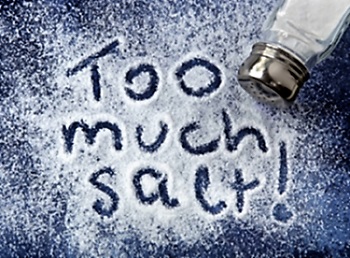A recent study shows that, in the United States, approximately 100,000 deaths each year can be attributed to excess salt intake.
 The study also suggests that a decrease of 9.5% in sodium intake (as has taken place in the UK in recent years) would prevent thousands of strokes and heart attacks in adults aged 40-85 years. It would also save more than $32 billion in medical costs. Many doctors and nutritionists recommend that we reduce our salt intake, but maintaining palatability in some foods can be difficult since reducing the salt can make them taste bland.
The study also suggests that a decrease of 9.5% in sodium intake (as has taken place in the UK in recent years) would prevent thousands of strokes and heart attacks in adults aged 40-85 years. It would also save more than $32 billion in medical costs. Many doctors and nutritionists recommend that we reduce our salt intake, but maintaining palatability in some foods can be difficult since reducing the salt can make them taste bland.
Source: Smith-Spangler C M et al, (2010) Population Strategies to Decrease Sodium Intake and the Burden of Cardiovascular Disease. The Annals of Internal Medicine.
Sodium reduction initiatives continue to be developed and implemented across the globe, as international public health agencies and governments strive to reduce the consumption of dietary sodium. Health experts worldwide agree that consuming too much sodium increases a person’s risk for high blood pressure, a serious health condition that is avoidable and is the leading cause of heart disease and stroke.
Food manufacturers, health professionals, and sodium-conscious consumers are looking for innovative ways to reduce the sodium content in foods and in the diet.
Using MSG to Reduce Sodium
We don’t just eat to live, we get pleasure from eating. The savory foods that we enjoy have a balanced, rounded flavor. Often this satisfying taste is due to the fat and salt content of the food. Adding monosodium glutamate (MSG) to recipes is a way to reduce sodium in foods, and reduce fat in foods, that still taste satisfying.
 Some people believe that by using MSG in food, the sodium content of foods will be increased.
Some people believe that by using MSG in food, the sodium content of foods will be increased.
However, that is not the case. Using MSG to season food can help to reduce the sodium content of recipes while increasing the savory umami taste.
Here are three good reasons to choose MSG to reduce the level of sodium in your products:
-
Reducing table salt by using MSG reduces the sodium content of recipes by up to 40% with no loss in palatability, as gram-for-gram MSG has two-thirds less sodium than table salt.
-
Glutamate is used at far lower levels than salt. MSG contributes only 1-2 percent of the total sodium contained in the average diet, even where it is used widely in food preparation.
-
Using a small amount of MSG in a low sodium product can make it taste as good as its high salt counterpart.
Related Research: Small Reduction in Sodium Could Have Large Public Health Payoff
Comprehensive research, published in the journal Nutrients, suggests that glutamates such as monosodium glutamate (MSG) can be used to reduce sodium in the food supply by 7% to 8%, especially in the saltiest food categories. More info.: full study and news summary
Read more about how MSG can be beneficial in a reduced-sodium diet.


 The chart below shows results from taste tests which demonstrate that people find food with low levels of salt (low sodium) significantly more acceptable when a small amount of MSG is added.
The chart below shows results from taste tests which demonstrate that people find food with low levels of salt (low sodium) significantly more acceptable when a small amount of MSG is added.